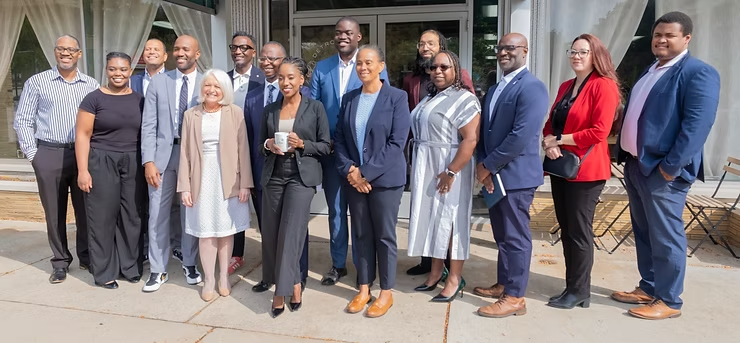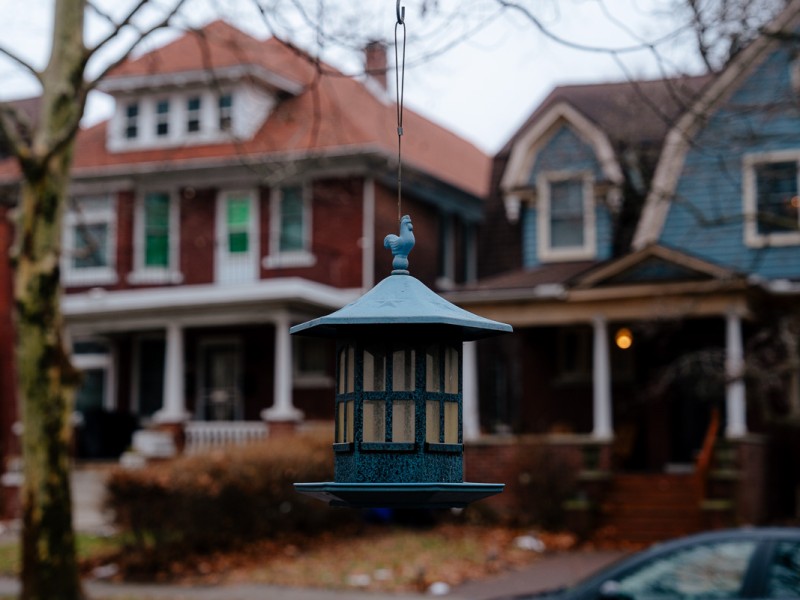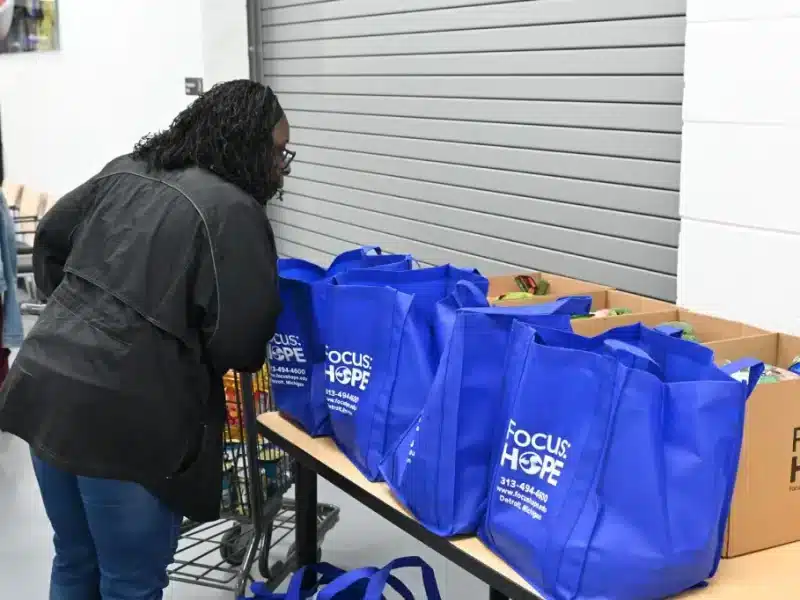A Philadelphia Story
The once empty streets of Philly’s Central City District now bustle with residents, downtown workers and sidewalk cafes. Phil Levy credits a business improvement district, something Detroit leaders are looking at, too.
Philadelphia has revitalized in ways that would make many American cities jealous.
Rents are still fairly cheap compared to Chicago and New York but the downtown is bustling. At all times of day and night, the so-called “center city” district enjoys workers, shoppers, visitors and partiers. Suburbanites from rural areas and from out-of-state are moving downtown, and the population has increased tremendously over the last decade with childless couples, young people and students providing a large percentage of the growth.
 Yet 16 years ago, there wasn’t a single outdoor café in downtown Philadelphia. It was 1990. That year, something happened. Business owners, tenants, employers and city officials got together and decided to start a downtown Business Improvement District. Since then, the downtown has witnessed mad growth.
Yet 16 years ago, there wasn’t a single outdoor café in downtown Philadelphia. It was 1990. That year, something happened. Business owners, tenants, employers and city officials got together and decided to start a downtown Business Improvement District. Since then, the downtown has witnessed mad growth.
Paul Levy is the president of Philadelphia’s business improvement area, dubbed the Center City District. He says its success is something that Detroit, Grand Rapids, and Pittsburgh and other Rustbelt cities could look to.
The district formed in 1990 when city business owners agreed to create a special taxing district; extra taxes would be levied on businesses in the 120-block area. The extra money would be used to clean up graffiti, to beautify streets and sidewalks with seven-day-a-week uniformed service, to enhance landscaping and lighting, and to increase police protection in the area.
Now, the 3-square-mile area of the 100-square mile city is Philadelphia’s economic engine, Levy says. The center city tax on more than 2,000 businesses raises $14 million a year for such amenities as community service representatives with radios to notify police of problems.
“Little changes in the environment can create big psychological changes in how people think of downtown,” Levy says.
Philly’s BID success includes such markers:
• Since 2001, there’s been a 171 percent increase in outdoor eateries in the “center city” district, to 187 today.
• Since 1997, when a 10-year tax break was offered on residential development, center city reports more than 8,300 new residential units downtown and 11,000 new residents, for a total population of 88,0000.
• Serious crime has been cut in half and auto theft was cut by 80 percent, Levy says. Nuisance crimes were greatly reduced with help from computerized crime mapping paid for by the BID.
“A ton of crimes get committed any place when the criminal thinks nobody is watching,” Levy says.
Improving the local psyche
Business Improvement Districts are nothing new. You can find them in D.C., Denver, and hundreds of cities.
 Many Detroit leaders have been calling for the creation of one here. An effort downtown several years ago failed because not everybody was on board. Some of the
Many Detroit leaders have been calling for the creation of one here. An effort downtown several years ago failed because not everybody was on board. Some of the
larger businesses were in favor of the project, but some of downtown’s
smaller shop owners were against paying an extra tax. They lobbied City
Council, and at the 11th hour, the proposal failed.
After last year’s SBXL festivities, calls for a BID started again. Downtown Detroit Partnership, in fact, took some baby steps toward creating one with its Clean Detroit program last year. That initiative, which had crews scrubbing and picking up trash daily downtown, has had a noticable impact, even though it was paid for by private funds and not through an official BID set up. Chair Roger Penske — the city’s Super Bowl guru — has set creating a BID as a goal for the DDP.
Levy says Business Improvement Districts’ benefits are many, and provide more than physical improvements. Promotion and marketing of downtown is very important, he says.
“It has a disproportionately positive effect,” Levy says of BIDs. “There’s a gigantic psychological impact. When cities decline, there’s a psychological decline. When there’s a BID, in Philadelphia it built confidence in downtown.”
In many ways, Philadelphia isn’t different than Detroit, Pittsburgh, Grand Rapids or other industrial cities. It’s an old city that suffered when industry moved out along with people fleeing to the suburbs for various reasons. Downtown businesses slowly closed up shop never to re-open, and abandonment set in. BIDS can help reverse the trend.
“BIDS take responsibility for the public environment in a way that has been neglected for a long time,” Levy says. “Cleveland launched a BID in the spring, and things are so upbeat. They’ve dramatically improved the confidence of investors in downtown.”
Levy compared the work of the BID and its respondent increase in visitors to downtown to what happens in your home. “If you are depressed, you let your house turn into a mess. When you have company coming over, you clean up. You need to have company coming all the time to downtown because it puts a positive spin on things.”
Of course there are major hurdles, the first being that business owners must agree to pay more in taxes. Levy says when business owners ask, “Are you crazy?” you must answer, “What are the consequences for not paying for this? Do you want to continue to see downtown as a place that’s dangerous and not a place to go?”
Secondly, there must be assurance from the city government that it will continue to provide the base level of services — police, fire and etc. — when the BID begins to supplement those services, Levy says. “The city must agree not to pull the rug and cut services when there are supplemental services provided,” he says.
And lastly, you must get the “right” business leadership. “You need a handful of leaders to step forward who say that this is something we need, and they start a parade that others follow,” he says. “Big businesses have to pay the lion’s share of this. That’s always the big challenge. Everyone is cost-conscious today.”
 Philadelphia’s BID started with simple goals — cleaning up and providing police protection, and later provided increased lighting, directional signs and landscaping.
Philadelphia’s BID started with simple goals — cleaning up and providing police protection, and later provided increased lighting, directional signs and landscaping.
A major element of the district was a 10-year tax abatement offered to developers converting properties to residential housing. Since then, 110 buildings have been converted, Levy says.
“We built from the simple, which was clean and safe, to promotion and marketing, to physical improvements,” he says.
Cooperation from the city and state governments was key, Levy says. The governments built a downtown convention center.
BIDs are no panacea, Levy says. There are many factors that go into the revitalization of a downtown, but BIDS can provide important steps. “A BID doesn’t change market realities. But a BID can make graffiti go away, it can eliminate fear and put crime behind you. It’s one tool of many. You have to be focused on walk-ability and have a competitive tax structure. You have to have a competitive environment, because that’s what the competition is doing.”
Levy says it is up to city business owners to take leadership. “BIDs take responsibility for the public environment in a way that has been neglected for a long time,” Levy says. “You have to ask yourself, ‘Do you want to continue on a steady market decline, or do you want to take on challenges and slowly reform your city?'”
For more information on Philadelphia’s Business Improvement District, go to http://www.centercityphila.org/home/default.aspx.
Philadelphia photos courtesy of the Center City District.




